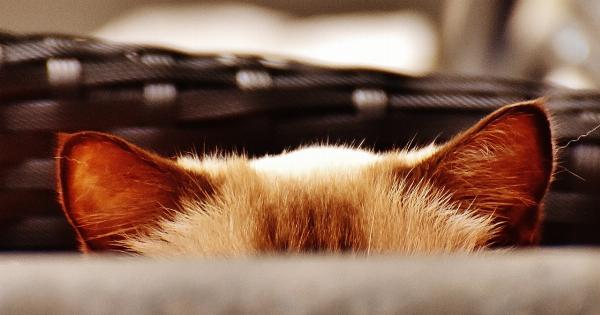The practice of ear lobe manipulation, which includes stretching, gauging, and other similar alterations, has gained increasing popularity in recent years.
While these modifications may be seen as a form of self-expression and style, it is essential to understand the potential risks and consequences associated with them. This article aims to shed light on the various risks of ear lobe manipulation and the importance of being well-informed before engaging in such practices.
1. Complications from Stretching
Stretching the ear lobe involves gradually increasing the size of the piercing hole to accommodate larger jewelry pieces.
While many individuals are attracted to the aesthetic appeal of stretched ear lobes, it is crucial to consider the potential complications that can arise. One of the most common issues is the tearing of the stretched lobe, which can occur due to excessive force during stretching or the use of improper techniques.
This tearing can lead to severe discomfort, bleeding, and even permanent damage to the ear lobe.
2. Increased Risk of Infections
Any modification that involves piercing the skin comes with a risk of infection. When it comes to ear lobe manipulation, the risk of infection is particularly high.
This is because stretching the piercing hole disrupts the natural healing process and creates an ideal environment for bacteria to thrive. Additionally, the use of unsanitary tools and improper hygiene practices can further increase the likelihood of infections.
These infections can manifest as redness, swelling, discharge, and even more severe symptoms such as fever and lymph node swelling.
3. Keloids and Hypertrophic Scarring
Keloids and hypertrophic scars are abnormal formations of scar tissue that can result from ear lobe manipulation. These types of scars can be unsightly, raised, and larger than the original piercing hole.
Keloids are more commonly observed in individuals with a genetic predisposition to scar formation, but they can occur in anyone. The risk of developing keloids or hypertrophic scars increases with larger gauge sizes and improper stretching techniques. These types of scarring may require medical intervention for proper treatment.
4. Blowouts and Thinning of the Tissue
A blowout refers to the thinning of the ear lobe tissue, typically seen as a visible protrusion of the inner tissue through the back of the piercing hole.
This condition occurs when excessive force is applied during stretching, causing the skin to be pushed outward. Blowouts can lead to discomfort, difficulty wearing jewelry, and an increased risk of infections. In severe cases, surgical correction may be necessary to restore the shape and integrity of the ear lobe.
5. Bleeding and Hematomas
Another risk associated with ear lobe manipulation is bleeding. Tearing of the lobe, improper stretching techniques, or accidental trauma to the piercing site can cause significant bleeding.
Additionally, some individuals may experience the formation of hematomas, which are pockets of blood that accumulate under the skin. Bleeding and hematomas can be alarming and may require medical attention to minimize the risk of infection and further complications.
6. Allergic Reactions to Jewelry
Various materials used in jewelry, such as nickel or certain alloys, can cause allergic reactions in some individuals. The ear lobe, being a sensitive area, is particularly susceptible to developing allergic contact dermatitis.
This condition presents as redness, itchiness, swelling, and sometimes blisters around the pierced area. It is crucial to choose hypoallergenic materials and avoid using low-quality, cheap jewelry to minimize the risk of developing an allergic reaction.
7. Long-term Scarring and Disfigurement
Ear lobe manipulation, especially when performed improperly or without appropriate aftercare, can result in long-term scarring and disfigurement.
Scars may be more noticeable in individuals with darker skin tones, and they can significantly impact self-esteem and confidence. While some scarring is expected with any form of body modification, it is essential to understand the potential extent of scarring and carefully consider the long-term consequences before undergoing any ear lobe manipulation.
8. Difficulty in Employment and Professional Settings
It is important to acknowledge that not all employers and professional settings are accepting of body modifications.
While attitudes are changing, especially in certain industries and creative fields, many conservative workplaces still adhere to strict dress codes and appearance policies. Visible ear lobe modifications, such as large gauges or stretched piercings, can potentially limit job opportunities or require individuals to remove or hide their modifications during work hours.
It is essential to consider the potential impact on future employment prospects before engaging in any form of ear lobe manipulation.
9. Psychological Impact
Ear lobe manipulation can have psychological consequences, especially when individuals experience complications or unexpected outcomes.
The dissatisfaction with the appearance of the ear lobe, social judgment, or difficulty adjusting to sudden changes in one’s appearance can lead to negative emotional and psychological experiences. It is essential to carefully evaluate personal motivations, expectations, and potential impacts on mental well-being before pursuing any form of ear lobe manipulation.
10. Addiction to Modification
Lastly, it is crucial to acknowledge the potential for addiction to modification practices.
Some individuals may become obsessed with continuously stretching their ear lobes or engaging in other modifications, often referred to as “body mod addiction.” This addiction can have both physical and psychological consequences, as it can lead to chronic damage, repeated infections, and excessive focus on altering one’s appearance. It is vital to approach any body modification practice with a healthy and mindful attitude, ensuring personal boundaries and limits are respected.






























